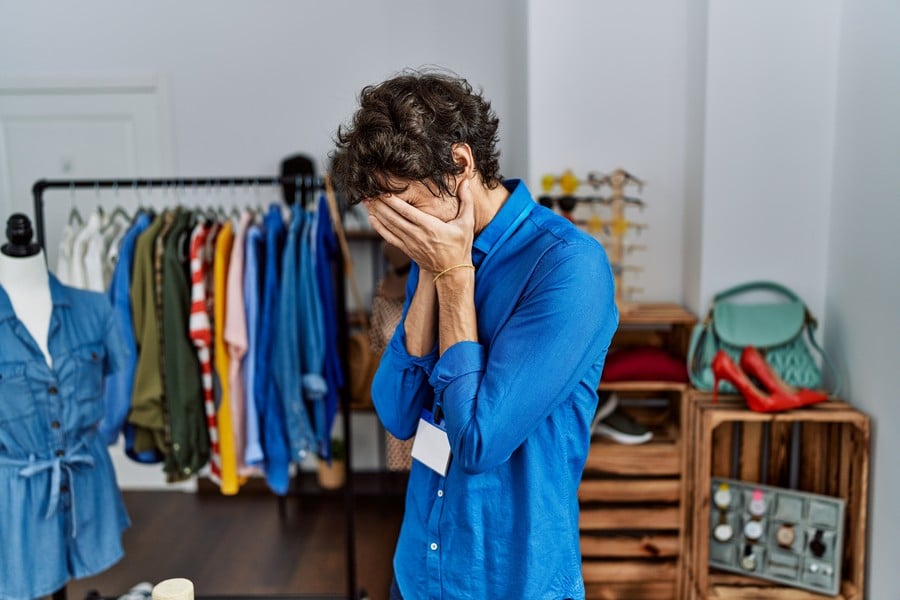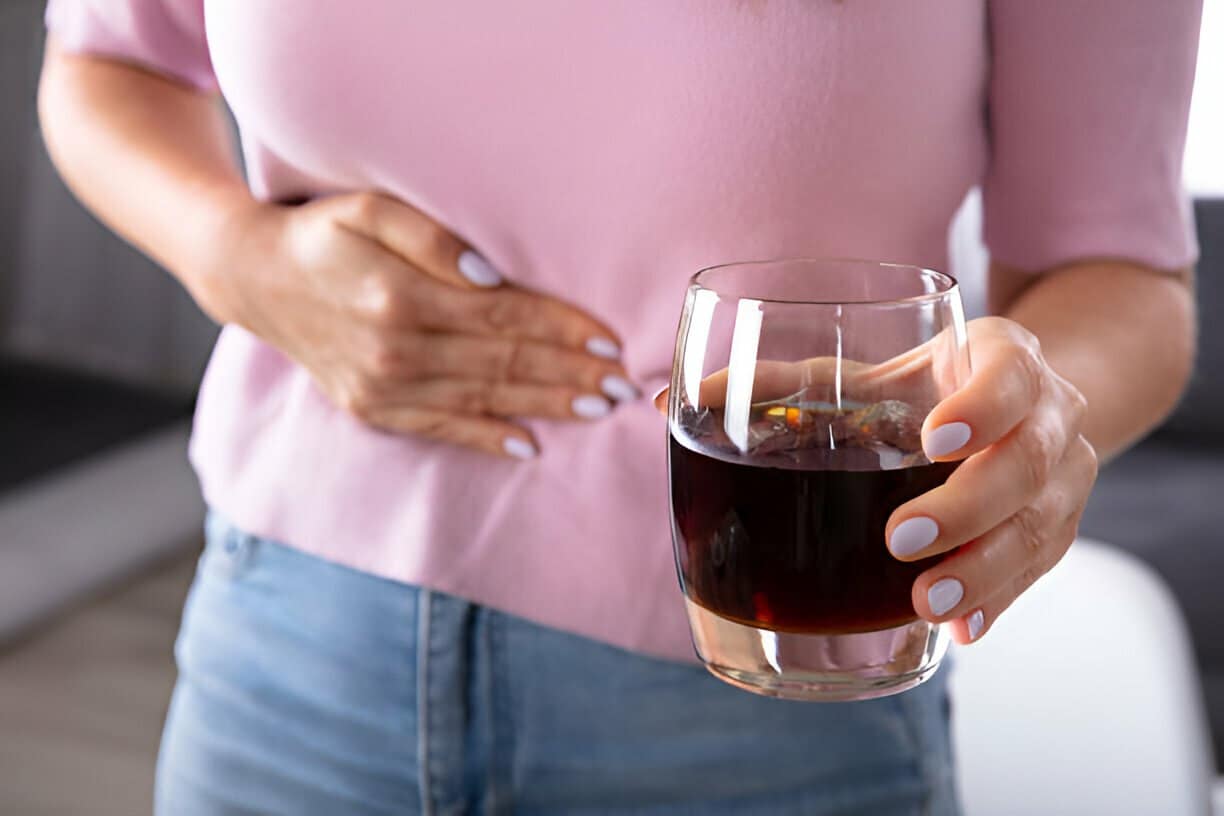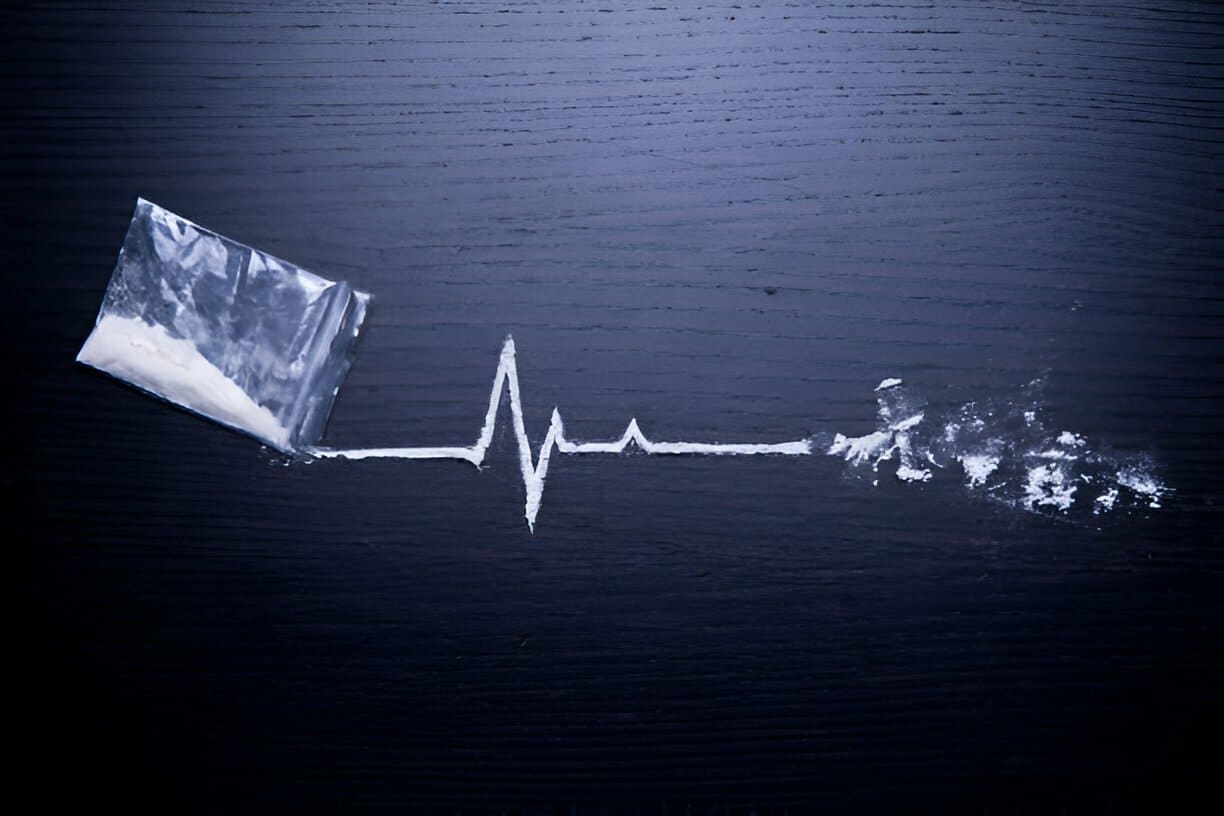Retailers and online internet companies are competing for your money, and they’re coming up with new ways to make it easier for you to use credit cards and get the best discount deals online. You most likely shop online during your morning commute, when you have a low workload, during your lunch break, and occasionally for a spur-of-the-moment purchase. It is easier to surrender to shopping during discount seasons such as Mother’s Day, spring break discounts, summer sales, and Black Friday deals.

Shopping might become a compulsive behaviour that you are unable to control. Even with increasing credit card bills and rent to pay, you hear about a terrific deal and feel compelled to buy what is advertised. When you shop compulsively, you experience a euphoria comparable to the “high” that alcoholics and substance users seek when they abuse narcotics.
According to a Stanford University study from 2006, men account for 5.5% of shopaholics while women account for 6%. According to a 2017 poll conducted by eWAY, an online payment provider, the most significant amount of sales occurs during business hours. However, early-morning shopping during the journey to work is equally popular. According to scientists and addiction experts, it’s an impulse control disease that can be treated with the same therapies used to treat alcoholism and other addictions.
Many people confuse compulsive and impulsive shopping, and others use the terms interchangeably; nonetheless, they refer to two distinct impulses with different meanings and consequences.
Impulsive shopping, also known as impulse buying, refers to a sudden and potentially overwhelming desire to buy something right away (“in the flesh” or online shopping). Impulse buying is driven by a desire to own the goods in issue rather than the act of purchasing itself. Typically, a consumer sees a specific product and is overcome by an overwhelming desire to buy it right away, even if they weren’t looking for it at the time.
On the other hand, compulsive shopping is motivated by a need to acquire rather than possess something. Even if compulsive shoppers have little or no interest in the products they buy, and even if they have little or no use for them, the act of shopping provides a release of psychological tension that builds up during periods when they do not make any purchases. Some obsessive shoppers concentrate their purchases on a particular category of products – for example, clothing, jewellery, technology, among others – whilst others purchase a wide range of items, including anything for sale.
Don’t go through the process of recovery alone. Treatment providers can answer your questions. Get in touch with one today.
Call 0800 999 1083 today!
Shopping addiction is a habitual behaviour that can occur at any time. On the other hand, a shopping spree happens in conjunction with a particular celebration or holiday event. A buying frenzy is more manageable and supported by the ability to pay for items. You have no control over your shopping addiction and wind up spending money you don’t have.

The critical distinction between shopping addiction (and any other behavioural addiction) and substance addiction is that the former has no external chemical influence on the sufferer and hence no external substance on which the sufferer can become physically dependent. However, not all addictive drugs cause physical dependency, and some of the mechanisms that drive both behavioural addiction and substance abuse disorders are the same. Both entail unbalanced neurochemistry – particularly in the brain’s reward centres – that drives addicts to engage in compulsive behaviour despite any potential negative consequences.
Substance abuse is often regarded as a significantly more serious personal and social problem, with many concerns – particularly those linked to physical health – that are not present in cases of shopping addiction. However, the latter can undoubtedly destroy an individual’s financial well-being just as easily, and potentially much more quickly, than a substance abuse disorder and can have just as serious ramifications for an addict’s relationships and life prospects, as well as being extremely harmful to their mental health.
Shopping addicts can concentrate their efforts on one type of product, multiple types or any product at all: theoretically, anything for sale could draw the attention of a shopping addict. One addict may be obsessed with buying computer gadgets; another may be obsessed with collecting clothes; yet another may be overwhelmed by the want to buy vehicles or motorcycles. Yet another may stroll into a department store and make various purchases on every level. Each case of addiction is unique.

In practice, however, many shopping addicts can be classified into one of several informal categories based on specific elements of their behaviour (which is crucial to note, are not part of any medically authorised diagnostic scheme).
The following are some examples of these categories:
These addicts are compelled to buy things on sale or can be purchased for less than their advertised price or perceived value for any reason. The sensation of “getting” or “winning” a good deal provides respite from addiction.
These addicts get their kicks from making a good impression on others by making high-value purchases. In some circumstances, a person’s self-worth is inextricably related to their ability to exhibit financial excess.
These individuals seek out the greatest – not necessarily the most costly – or rarest products to purchase. The quest and the gratification acquired at the end of it are essential components of addictive behaviour.
These types of patients search out multiple forms or variations of the same object, as well as distinct component elements of a set or series of products or related items within a single product category. The act of collecting, as well as a potential yearning for completeness, fuels the addiction here.
These people use shopping to cope with negative emotions, challenging situations, and so forth. They may have little or no interest in the product they are acquiring; purchasing is the act of offering relief.
Just as people with bulimia nervosa gorge themselves on food before purging to ensure that they do not retain the large number of calories they have consumed, “shopping bulimics” make large or frequent purchases before returning them for refunds to ensure that their original behaviour has few or no long-term financial consequences.
As usual, it’s important to remember that, as previously stated, each case of addiction is unique. While there are many commonalities to be found, we must be cautious about developing a “checklist” of stages of addiction because any specific case may not fit into such a scheme.

However, a general guideline to the course of addiction can be beneficial in various ways, including as a stimulus for persons who self-identify as shoppers or who are concerned that they may have developed an addiction to assess how serious they believe their situation is.
Researchers Sang-Hee Sohn and Yun-Jung Choi published an article titled ‘Phases of Shopping Addiction Evidenced by Experiences of Compulsive Buyers’ in the June 2014 issue of the International Journal of Mental Health and Addiction. The authors of this article identified five possible stages of shopping addiction, each with its own set of behaviours and drivers (as summarised in the article abstract in brief phrases derived from interviewees’ testimonies):
Although we should be cautious about putting too much weight on single research – and it’s crucial to note that this process isn’t universally applicable – the authors provide an interesting explanation of the symptoms and effects of each phase on addicts.
Addiction, in any form, is typically a very emotional disorder: an addict may go to great lengths to conceal their condition from others, motivated by a sense of shame, a fear that their behaviour will be curtailed (and thus their thrills and “highs”), concerns that public knowledge of their addiction will negatively impact their professional or academic circumstances and reputation, or simply a reluctance to confront the reality of their situation.

Unlike many drug abuse disorders and other behavioural addictions and related conditions such as eating disorders, shopping addiction may have little to no obvious effects on a sufferer’s physical health that can be used to diagnose their addiction. Shopping addiction’s signs and symptoms are considerably more likely to be emotional and behavioural in character, manifesting themselves through the addict’s daily circumstances.
If the concealment is uncovered, the above-mentioned secretive behaviour can be one of the most obvious indicators of shopping addiction (for example, if the addict is caught in lies or if their furtive behaviour is recognised). When confronted about their purchasing or their financial situation, they may become angry, anxious, or even hostile. Approaching them about the problem may cause grief, despair, and other signs of emotional volatility, especially if they are in considerable financial trouble or if their addiction is affecting others.
Shopping addicts who are unable to make purchases due to a lack of access to shopping, being forced to engage in other activities or fulfil other duties, or being refused access to money might get anxious and irritable, making regular social contact difficult. They may abruptly snap or lash out, or they may become depressed and taciturn.
Depression and a variety of other problems, such as anxiety and insomnia, can appear as a result of a shopping addiction over time, especially in cases where the addiction has taken a significant financial toll. Such conditions can have distinct symptoms and can even lead to self-harm or suicide in some situations.
Shopping addiction does not usually generate physical symptoms, but the high levels of stress that can arise from it can cause issues like physical tics and muscular spasms, as well as high blood pressure and other health problems. Some addicts may self-harm, resulting in visible wounds, and related problems like insomnia may also leave visual symptoms.
Although shopping addiction is not now recognised as a medical or mental health problem by the world psychiatry community, addiction experts feel it should be treated similarly to any other addiction. According to specialists, shopaholics assume that the shopping habit makes them feel better, but it actually makes them feel worse. You shop to alleviate the symptoms of a mental condition, and after a while, you shop to conceal deep-seated mental illnesses.
The majority of the issues that come with a shopping addiction are psychological. Spending addiction is a symptom that you have deeper issues to deal with before you can overcome your buying addiction.
Some parents use presents and gifts to compensate for their absence from their children’s lives or bad parenting skills. When the kids get older, they go shopping to fill a void.
Children who grew up in poverty may overshop when they are financially secure to compensate for all the things they didn’t have or enjoy as children, such as designer clothing, computer gadgets, and expensive jewellery.
Loneliness, despair, and anxiety may all be alleviated by compulsive shopping. If you’re experiencing any of these symptoms around the holidays, you might consider shopping to feel more confident or loved and reduce stress. Your brain releases dopamine and endorphins when you’re addicted to shopping. These are neurochemicals that make you feel good and encourage you to do the same thing repeatedly, which can lead to addiction.
People with another mental health condition or drug addiction are substantially more prone than the general population to develop a shopping addiction.

Shopping could be one of your coping mechanisms for dealing with the stress associated with a bad relationship.
While studies reveal that any gender imbalance in the expression of shopping addiction is nowhere near as prejudiced towards women as popular belief claims, it does appear that women are slightly more susceptible to acquiring the illness than males.
Even though shopping addiction often necessitates a high level of disposable cash, current research suggests that young people are substantially more likely to be afflicted than their older counterparts, with one study estimating the average age of a shopping addict to be 30.
Individuals raised in households with shopping addicts, people with other addictions or people with other mental health problems are far more likely to develop a shopping addiction than the ordinary person.
People who do not believe they have intimate and meaningful relationships with others, romantic or otherwise, are more likely to develop behavioural and chemical addictions. Anyone who tries to substitute material goods and acquisition for emotional fulfilment is at risk of developing a shopping addiction.
Individuals who emphasise materialism and financial success are considerably more prone to get addicted to buying than those who prioritise creative endeavours, emotional fulfilment, spiritual development, and other objectives and motivations.
Other factors that contribute to shopping addiction include:
Growing up in a household where your parents were perpetually in debt impacts the children. They witness quarrels and feuds stemming from one of their guardians’ spending habits. Whether they can afford it or not, most obsessive addicts live an expensive lifestyle. They have an impeccable sense of style and are constantly dressed in luxury labels.
One of the risks of a shopping addiction is losing life skills that might be beneficial to you, particularly the art of deferred gratification, which is a highly valued quality. Your spending habits also prevent you from functioning well in society. Poor financial management can lead to the breakdown of a marriage, the loss of a family home, and financial ruin.
You’re probably hooked to shopping if you use it to escape negative emotions or unpleasant feelings. According to Dr Cecilie Andreassen, shopping to modify one’s mood is a primary indicator of shopping addiction. According to the Consumer Credit Counseling Service, 50,000 people fall into financial problems as a result of their shopping habits, with 20% of women being shopaholics.
A credit card swipe gives you a sense of control, but worry returns after a few days, and you’re back in the store. Because it’s so easy to get a credit card, you’ll be moving on to the next one as soon as your current one is maxed up. Most people don’t seek help for this problem until they’ve reached rock bottom.
In addition to being a mental health condition in and of itself, shopping addiction is linked to a variety of other problems that either contribute to or arise from the addiction.
According to most research, people with mental health disorders are much more prone to acquire behavioural addictions, such as shopping addictions. People with mood disorders, which might leave them feeling dissatisfied, apprehensive, or in any other way that the experience of making purchases can temporarily ease, are particularly vulnerable to developing a shopping addiction. Bipolar disorder patients, in particular, are more likely than the general population to develop a shopping addiction, generally bingeing during manic episodes.
Studies have also identified an association between anxiety and depression and shopping addiction. These conditions are associated with impulsivity, low self-esteem, hedonism, and consumerism. Consumers cope with melancholy moods by shopping, making depression the most frequent disorder. It is a primary trigger for shopping addiction, according to a study, and should be addressed in treatment.
Depression is one of the most common co-occurring disorders with a shopping addiction. It can play a role in the development of the addiction as people turn to shopping to cope with their depression, as well as stemming from it the increasing stress of the shopping addiction and the problems caused by compulsive spending – particularly spending beyond one’s means – have ever-increasing psychological consequences. Treatment for shopping addiction frequently includes treatment for depression, which can result in a more complicated and lengthy treatment like other dual diagnosis situations. Still, recognised medications for depression can surely aid in such cases.
Although some studies suggest that people with substance abuse disorders are more likely to develop shopping addictions, the link isn’t well established. It could just be that those people are more prone to addiction in general. Many people who embark on “shopping binges” do so while under the influence of drugs or, more commonly, alcohol. The consequences of shopping addiction, such as the development of mood disorders and financial difficulties, can encourage some people to seek escapism in drink or drugs.
When it comes to your physical and mental well-being, having no control or feeling the obsessive need to shop for products is a symptom of addiction. When your shopping addiction has gotten out of hand, you’ll need help. Professional therapy can help you break the habit by analysing the feelings and causes that contributed to your shopping addiction and treating psychological symptoms with research-backed therapeutic practices.
The majority of people addicted to shopping recognise that they have a problem but are unsure how to seek treatment. The following are a few therapy options:

This treatment approach aids in the identification of the mental processes and behaviour patterns that lead to the desire to purchase. This type of therapy will teach you how to improve your mind process and behaviour.
If your shopping addiction is fueled by mental health disorders like anxiety and depression, your therapist may prescribe antidepressants and anti-anxiety drugs to treat these underlying symptoms.
Individuals with a shopping addiction can attend a variety of support group meetings. Shopaholics Anonymous, online support, Spenders Anonymous, and Debtors Anonymous are among them.
Here are some tips to avoid an episode of binge shopping:
Determine what causes you to go on a buying binge. It’s simpler to work toward treatment when you’re aware of your triggers.
Restrict your purchases to products that you require rather than those that you desire. You can block your favourite stores’ websites and have a trusted friend set the password for you. Reduce the amount of time you spend online.
Stop hanging out with people who urge you to spend money you don’t have. Some people organise shopping trips with friends as a form of social engagement, which can have serious negative effects on a shopping addict.
You can meet new people who share your goals at support group meetings.
If you’re feeling down or the impulse to purchase is too strong, go to the gym and sweat it off. You will feel better in a social situation where people surround you.
Apart from withdrawing into isolation and having a third party make all of your purchases, it is nearly hard to avoid shopping entirely, making shopping addiction a challenging condition to overcome. However, some steps can be taken to try to prevent the onset of an addiction.
Setting strict spending boundaries – and even restricting access to excess cash, credit, and especially store cards – as well as keeping to previously made lists of wanted things are clear tactics that can have a favourable outcome. It’s also crucial to avoid shops when you don’t intend to buy anything: attempt to reject the idea of shopping as a fun pastime rather than a practical requirement. Setting up a savings account that you can’t quickly withdraw money from and sending as much money as you can into it on a regular basis might be a safe and rewarding method to avoid overspending. Rather than creating an account yourself, ask a friend or family member to make online purchases for you.
Shopping addiction is linked to an obsessive-compulsive disorder in which a shopper feels compelled to keep whatever they buy, even if it isn’t necessary. The affected person is in need of your compassion and support as they battle a shopping addiction. Here are a few suggestions:
If you (or someone you know) suffer from a shopping addiction, don’t wait any longer to confront the problem. Contact your doctor or a certified addiction expert right away to discuss your condition and explore treatment alternatives to achieve a healthy and fulfilling life.

BACP accredited psychotherapist with 16 years experience working in mental health specialising in psychodynamic person-centred therapies treating those with a range of mental health disorders including anxiety, depression, OCD and Addiction.

Fill in your details and we’ll send you a message via SMS.

No matter where you live, there are drug and alcohol rehab options for you to discover. Treatment providers are waiting to answer your questions. Get started today.

Ever felt that gnawing ache or burning sensation in your gut after a night of drinks? You’re not alone. Stomach pain after drinking is a common complaint, and there are a few reasons why it might happen. Let’s delve into the science behind the discomfort and explore ways to soothe your stomach. The Irritating Truth: … Continued

Cocaine, a stimulant known for its short-lived burst of energy and euphoria, hides a dark side. Behind the initial high lies a dangerous potential for overdose, with severe health consequences and even death. This article delves into the world of cocaine overdose, equipping you with the knowledge to recognize the signs, understand the dangers, and … Continued

Adult smoking habits in the UK refer to how often and in what ways people aged 18 and above use tobacco. This includes everything from smoking cigarettes every day to occasionally lighting up, as well as using other tobacco products. Understanding these habits is important for several reasons: Public Health: Smoking causes many diseases that … Continued

Addiction in the UK is a complex issue that is connected to various aspects of society such as healthcare and law enforcement. It affects people from all backgrounds and has negative impacts on families, communities, and the entire nation. Understanding addiction involves not only looking at the uncontrollable use of substances and repetitive behaviors but … Continued

Don’t go through the process of recovery alone. Treatment providers can answer your questions. Get in touch with one today.
Call 0800 999 1083 today!








